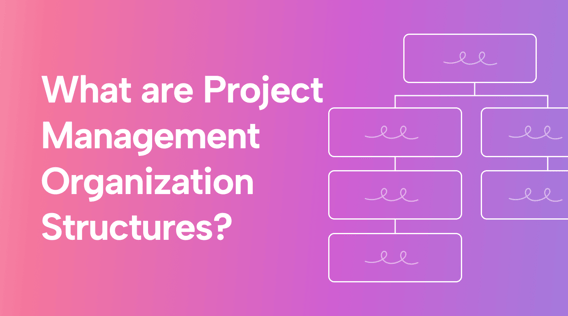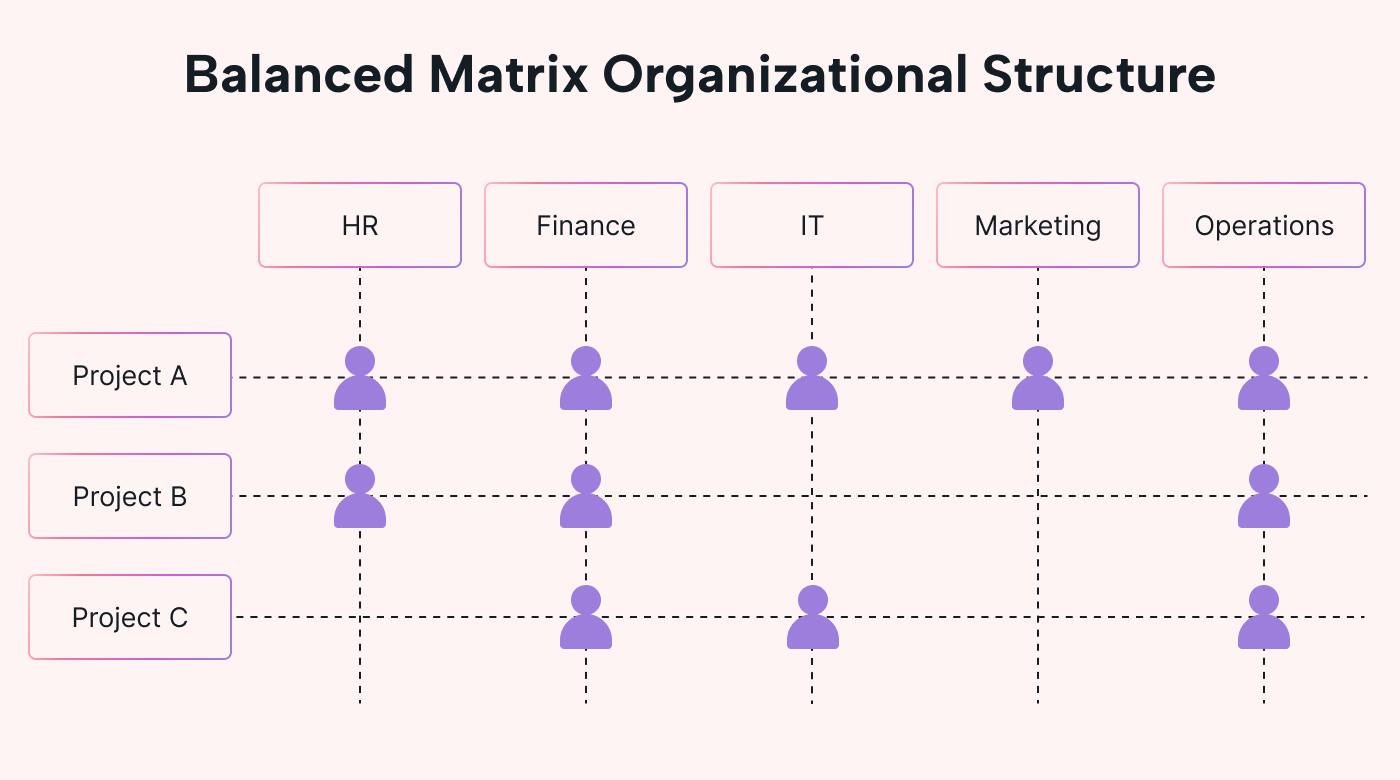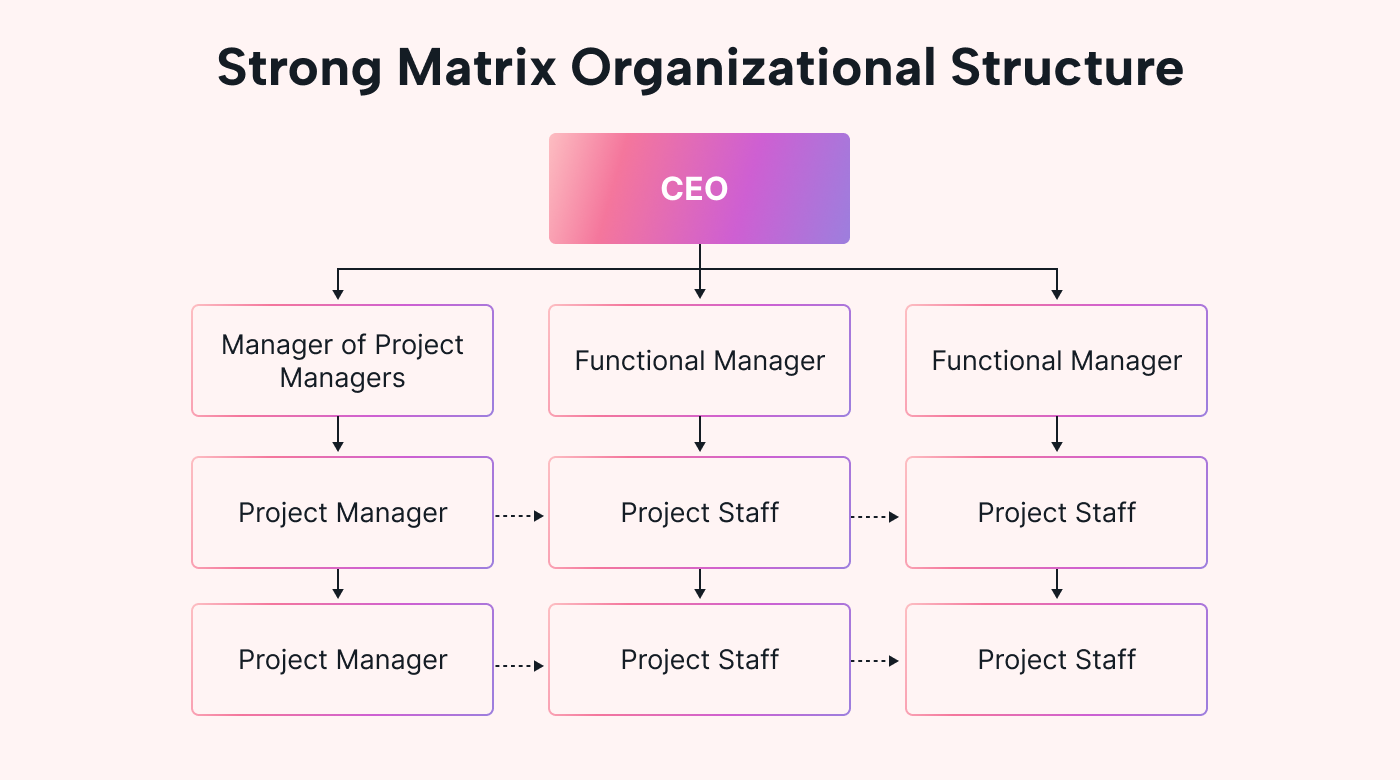Are you tired of the constant struggle to keep your projects organized? Do missed deadlines, confused project teams, and the endless mess leave you frustrated and overwhelmed? Does the chaos in your project management drive you crazy? Are you itching for a solution to put things right?
If you've been nodding along, we've got some answers you've been longing for.
In this article, we’ll show you the power of project management organizational structures. We'll explore how they bring order to your business and show you how to use them to guide your projects.
What is a project management organization?
An organization is “a body of people with a specific purpose.” But, the composition and configuration of this “body of people” impacts the when, whether, and how of the “specific purpose.”
To know how any management organization works, you must grasp the underlying structure and processes.
A project management organization structure clarifies how the entire organization is structured, and how projects are managed within it. Think of how the body of people communicate and report to each other, as well as who is in charge of what.
Project structures are only used during a project, so they’re temporary and based on the needs and objectives of the project vs. the resources the company has. Unless the organization does similar types of projects over and over, you’ll rarely have a carbon copy of a structure from one project to the next. Roles and assignments change and business requirements shift.
Three project management organization structures
There are three basic types of structures in organizations that perform projects:
- Functional
- Matrix
- Projectized
The authority, roles, and duties of managers within the current organization depend on the organizational structure you choose.
The organization structure you choose depends on the nature of the work you do. The role of the project manager also changes within each of these frameworks.
Understanding how each framework operates will help you design your organization and even plan your strategy better. The project manager's authority level varies within each structure. It's important to understand the vertical and horizontal lines of authority and responsibility.
Functional organizational structure
A functional organizational structure is also called a conventional and traditional organizational structure. In this structure, the decision-making power rests with functional managers.
As such, the type of work dictates how departments, divisions, teams, and work groups are arranged. Functions often include finance, engineering, accounting, human resources, professional services, sales, and more.
For each project, team members from the respective department will take up temporary project roles. Those team members supplement their responsibilities within the department with project work.
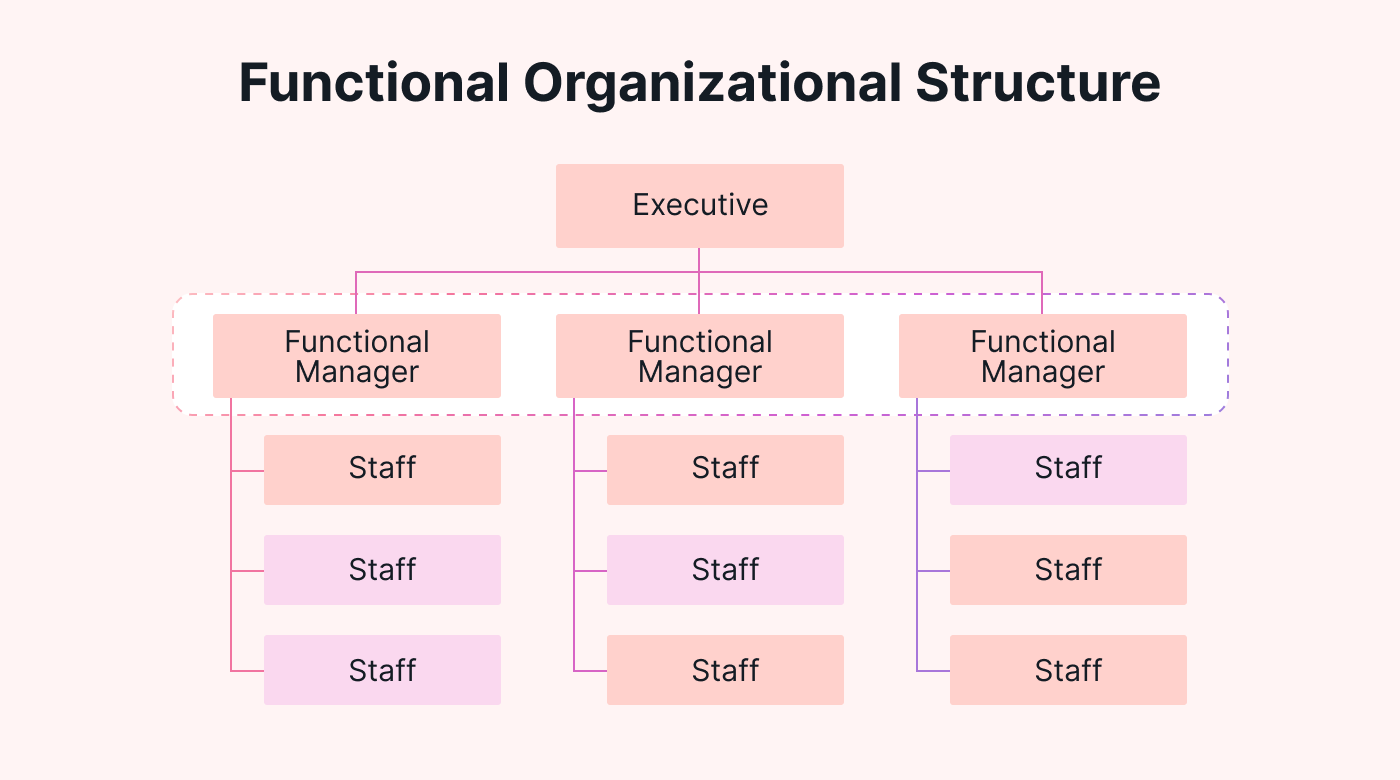 |
Project managers in this structure have little or no authority, so the role is often part-time rather than full-time. The project manager reports to the functional manager, who oversees the resource allocation, budget, and management. Once the project is complete, they’ll return to their full-time role in the business.
For example, Sarah (a sales rep) is the project manager of a new marketing campaign. She’ll report to the head of marketing, and following completion of the project, return to her usual role.
Projectized organizational structure
A projectized organizational structure is sometimes called project-based project management. In this structure, the primary divisions of people within the company aren’t departments but project teams. The coordination of work is project-oriented.
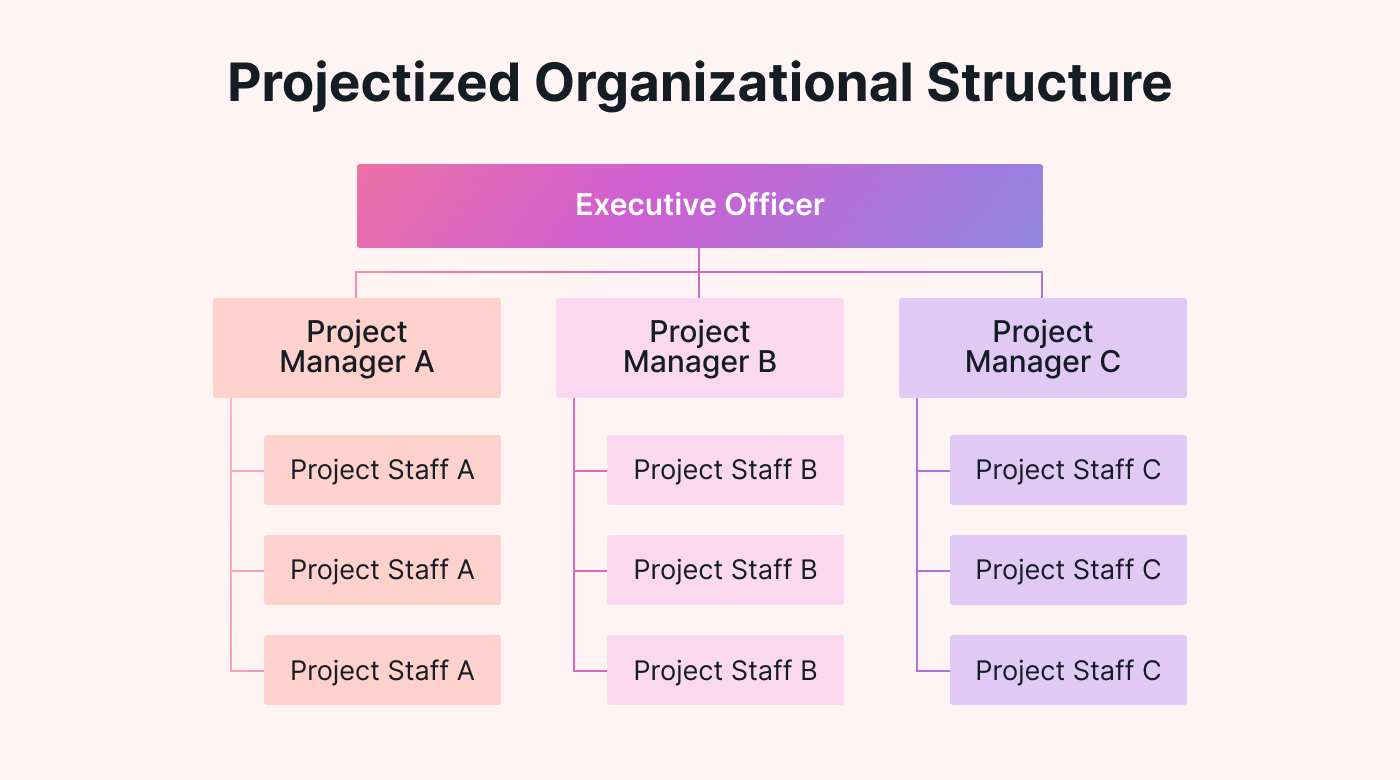 |
In this structure, the authority (and responsibility) falls to the project managers. They also allocate work to project team members who are dedicated to each project rather than functional departments.
As this type of organization focuses on delivering projects, project managers don’t have a functional role to revert to. They may sometimes also lead multiple projects at the same time.
Companies that fit this type of structure use the same or similar team makeup from project to project. An example is something like a commercial building business.
Sometimes, people leave jobs or advance to other roles, which means the underlying people behind the structure can change. But, how the positions are organized remains the same, even if individual people change roles.
Matrix organizational structure
A matrix organizational structure is a blend of functional and projectized. In this structure, functional managers and project managers both have power and autonomy (to varying degrees):
- For functional managers, the authority moves vertically
- For project managers, the authority moves horizontally
Team members working in a matrix organizational structure often report to multiple managers. For example, a front-end developer (John) who works 45 hours a week can be allocated 25 hours on an app development project. During the 25 hours, he works on the app, and he reports to the project manager. For the other 20 hours, he reports to his functional manager.
There are three types of matrix organizational structures:
- Strong: Project managers hold the most authority
- Weak: Functional managers have the most authority
- Balanced: The functional manager and the project managers hold equal levels of authority to varying degrees
A balanced matrix organizational structure can appear to have the best of both worlds, but it isn’t easy to get it to work effectively. To get the most out of this structure, you must be clear on which manager does what so it’s not confusing (or plagued by bias).
You have this structure when many projects the company undertakes need specialized cross-functional skills. Think of the skills it takes to deliver a project in a creative field. The managers of each functional area hire and develop skilled people in that area, say design. Most projects the company does require a design, so the designer will shift between projects and functions.
The strong matrix structure contains a special department dedicated to effective project management. In this structure, the project manager can work across any department or team.
What is organizational project management, and why does it matter?
Project managers use organization project management (OPM) to align team members before and during a project.
The Project Management Institute (PMI) defines OPM as:
“An approach that leverages portfolio, program, and project management in addition to organizational-enabling practices to reliably and regularly implement an organizational strategy to improve performance, better results, and an ongoing competitive advantage.”
OPM involves using tools, methodologies, and best practices to prioritize, execute, and monitor projects. It helps you allocate resources, manage risks, and make sure every project contributes to your company's success.
Conducting OPM improvement as a program will give you a framework to standardize and apply across initiatives. Once you have your standardized process, you can look for further process excellence with tools like Lean and Six Sigma to achieve a higher quality.
Features of an organization structure
An organizational structure dictates authority, communication lines, coordination, supervision, and responsibilities.
Across all the structures, the features are as follows:
- Hierarchy: Outlines the authority and defines decision-making responsibilities.
- Division of labor: Refers to the division of work in many pieces. For example, with a production or manufacturing company, it’d define the roles at each station.
- The span of control: This is where you define who manages whom (and how many).
- Position type (line vs. staff): The line works with organizational goals and objectives. Staff is in a support role to that, like legal, accounting, or HR.
- Centralization: An organization can be both centralized and decentralized. This can cause issues as you have two divisions or teams thinking they can make a particular type of decision. Using the DACI framework helps clarify who makes which kinds of decisions. For example, decisions about features are made centrally and sales remotely. And everyone knows which decisions they can make. That speeds up decision-making and removes confusion.
How to choose the best structure for your business
Before you jump in and start creating structures, you should think about a few critical factors. Look at factors like:
Current and future resources and limitations
Think about your current staff and future needs. Don’t use a projectized structure if you aren’t sure you’ll have a steady amount of projects; otherwise, you might sit with idle resources.
You should also evaluate (and decide) what you’ll keep in-house or outsource, like software tools or outside resources (like vendors, freelancers, and suppliers).
Do you work on complex projects?
If a project is less complex or smaller, the project manager might have other duties besides coordinating project work. They can accumulate project coordination with other projects or departmental work.
If it’s a more complex project with many team members, it’s better if your project managers are more specialized and supported by project administrators.
What authority do your project managers require?
Think about how you want your teams to communicate with each other and who you want them to go to for advice when they get stuck.
If all you’re doing is projects all the time, and your team skills are stable, you benefit from a projectized organization (remember the commercial building squad).
If you have specialized skills to develop, you might need a matrix structure.
If your organization uses mainly functional managers like a hospital or school, then you might not need many project managers.
Use Motion to manage your project organization structure
Applying organizational structure requires effective tools and strategies. Motion is a powerful productivity platform offering useful features for running most of these organizational structures.
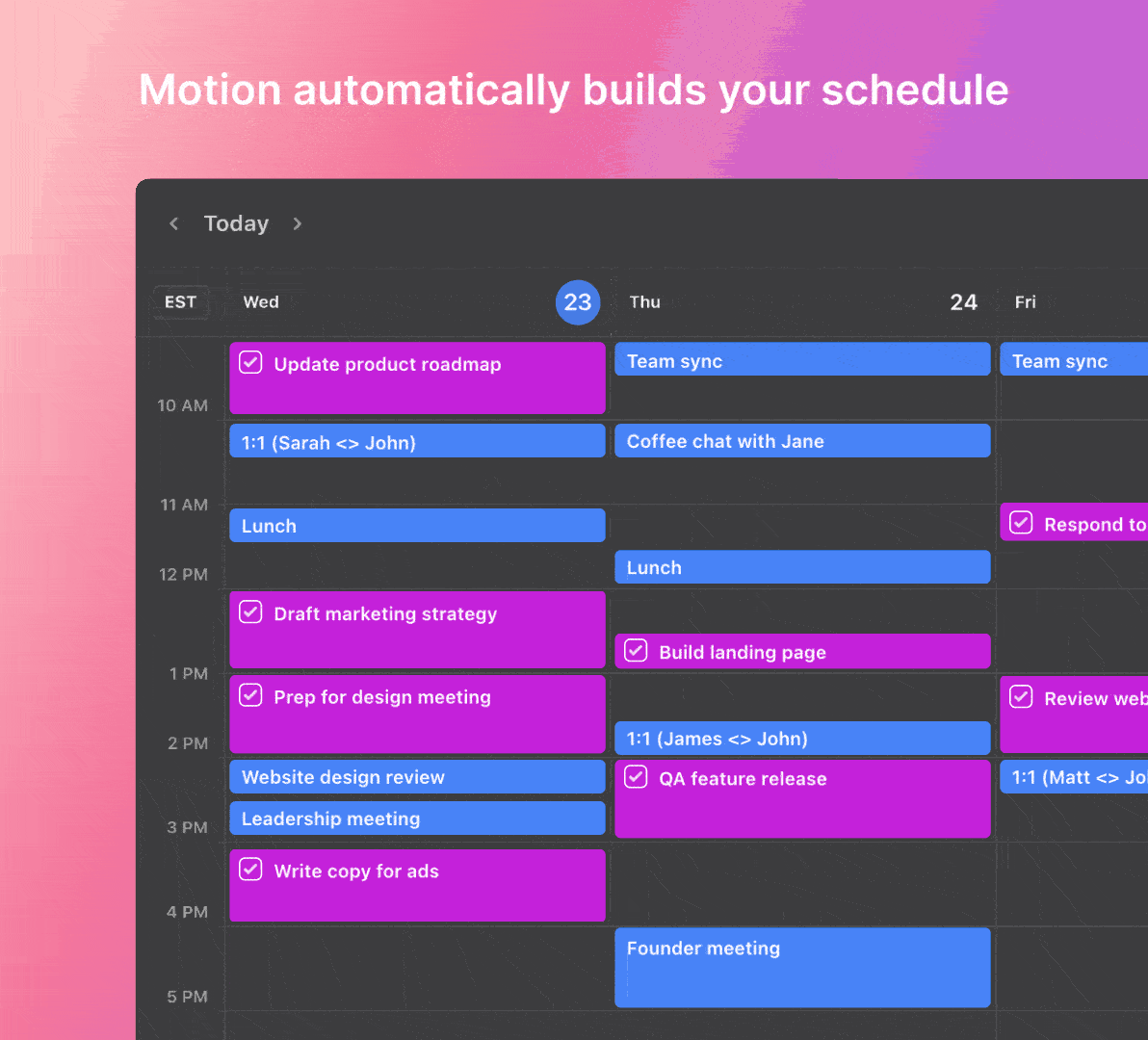 |
Motion’s intelligent scheduling helps teams to navigate the complexity of any structure. It can plan your team’s day based on variables such as:
- Resource availability
- Dependencies
- Task priority
- Deadlines
This capability is beneficial for matrixed (or any) teams to stay on track and meet project milestones.
Coordinating meetings across time zones can be a major challenge with any structure. Motion simplifies this by providing features like time zone conversion and availability tracking. With Motion, cross-functional or remote teams can automatically schedule project meetings, accommodating everyone’s availability.
Its collaboration tools facilitate seamless communication and information sharing. Shared task lists, file sharing, and real-time update features keep everyone connected.
Sign up for your 7-day free trial.

